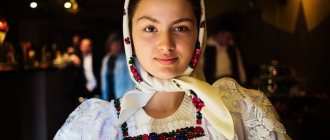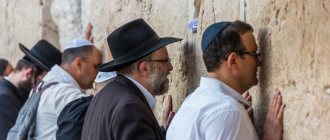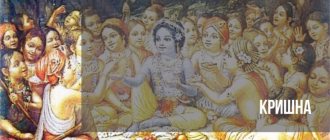Main religions in Azerbaijan
After reading the article, you will cover the entire religious spectrum of Azerbaijan in 15-19 minutes.
One of the surest ways to get to know the population of a state is to study its religious characteristics. To understand how people live, to penetrate into the culture, to understand their way of thinking, the researcher needs to turn to the very sources of their worldviews - to beliefs.
The content of the article:
- Main religions in Azerbaijan Official religion in Azerbaijan
- The main religion is Islam. The emergence and spread of Islam in Azerbaijan
- Sunnis and Shiites
- Islam in Azerbaijan today
- Ashura Festival
- The influence of Islam on the culture of Azerbaijan
- The history of Azerbaijani Judaism goes back about 1300 years.
- History of origin
- Zoroastrianism is one of the oldest religions.
- What tenets does the Baha'i teaching proclaim?
- Idolatry
- Women's rights under the constitution.
- Eid al Adha.
If we talk about Azerbaijan, then its people, in religious terms, are extremely diverse and varied.
1.1. Official religion in Azerbaijan
According to the current constitution, Azerbaijan positions itself as a secular state . Its population professes many religions - there are both the most popular world faiths and little-known religions that perhaps some of the readers have never heard of. Therefore, quickly answer the question: “What is the faith of Azerbaijanis?” it will be somewhat difficult.
Muslims and Christians and even Zoroastrianism
The main religions in Azerbaijan are Islam and Christianity. There are no surprises here, since these religions are the most popular on the planet (according to Wikipedia, 24.1% of the total population of the Earth are Muslims and 33% are Christians), and have a huge number of followers. Among the population that does not belong to these faiths, one can find adherents of: Judaism, Zoroastrianism, the Baha'i religion and many other faiths.
Religion and legislation
Let's start our story by repeating the fact already stated above: according to the current legislation, there is no official religion in modern Azerbaijan. But the legislative framework of the Land of Fire allows freedom of faith, and therefore Azerbaijan abounds in religious movements of various kinds.
Interesting fact!
The Republic of Azerbaijan does not use European models of state regulation of religious-social relations. They have developed their own Azerbaijani model. According to candidate of historical sciences Guluzade Musa Nizam oglu, “while religious isolation is increasing in the world, the situation is being escalated from the top for religious conflicts, in Azerbaijan there is a normal, calm environment that promotes religious tolerance and freedom of religion for everyone.”
1.2. The main religion professed by the population of Azerbaijan is Islam.
Islam (İslam from Arabic world, submission) is based on the following dogma: “There is no God but Allah, and Muhammad is His Prophet.” The doctrine that God is one is called “tawhid”, and underlies the entire Muslim faith, which in Azerbaijan is followed by about 93.4% of the population.
1.2.1. The emergence and spread of Islam in Azerbaijan
Islam is a fairly young religion; it has its origins in the writings of the Prophet Muhammad, which were compiled around 610 AD.
The new teaching united the scattered Arab tribes, and soon a new religious community (Arabic - umma, mother) appeared in the Middle East, professing principles completely unusual for a pagan people - the principles of Islam. A little time passed, and the united tribes created a new state - the Arab Caliphate, which quickly strengthened, and soon began to occupy a substantial territory, also capturing those lands that today belong to the Republic of Azerbaijan.
Of course, the caliphate implanted its religion in all the nations it captured, and this is how Islam came to the territory where the state of Azerbaijan now exists. It spread here in less than 100 years and has taken root very well.
1.2.2. Sunnism and Shiism through the centuries
Islam in Azerbaijan has gone through a lot. From the moment the original Ummah split into two branches - Sunnis and Shiites, there was constantly some kind of struggle in Azerbaijan between the adherents of these movements.
During the era of the Shirvanshahs, the Azerbaijani people, for the most part, professed Sunni Islam, then, in the period from the 16th to the 18th centuries, when the Safavid dynasty persecuted the Sunnis, the proportion gradually began to level out, and by 1830, when Azerbaijan was already part of the Russian Empire, The Azerbaijani Shiite camp began to quantitatively predominate over the Sunni camp.
In Soviet times, the authorities sought to destroy Islam in Azerbaijan (as well as any religion, for that matter). They closed mosques, persecuted the clergy and carried out fierce anti-religious propaganda. In those days, Islam went to remote villages, and spent almost the entire twentieth century there - until the time when the USSR collapsed and Azerbaijan gained independence.
1.2.3. Islam in Azerbaijan today
Today, the Shiite Islamic school predominates in Azerbaijan. The share of Shiites in the Islamic society of the republic is about 70%.
It cannot do without radical groups.
One of the largest and most influential radical Islamic groups is the group in Ganja. These people seek to abolish the secular order in Azerbaijan and subordinate the entire legal system to Sharia law. This desire is expressed in very aggressive behavior on their part, holding protests, and attacks on government employees.
They also often became the instigators of various riots. Take, for example, the events that took place in Ganja in 2011 and 2012. Or an incident that occurred during the celebration of Ashura in 2015, which was later repeated in the Imam-Zadeh complex. The head of the department of interethnic relations, multiculturalism and religious issues, E. Najafov, believes that this group has support from abroad.
The management of Islamic religious communities in Azerbaijan is carried out by the highest spiritual and administrative body of Muslims in the countries of the Transcaucasian region - the “Administration of Muslims of the Caucasus”. The “Administration...” is located in Baku, and of all the MBMs of the former Soviet Union, it is unique, since according to its charter, the head of the MBM must be a Shiite, and his deputy must be a Sunni. Such a hierarchy cannot be found anywhere else, which is what sets the “Caucasian Muslim Office” apart from the rest.
1.2.4. Ashura Festival
Muslims of Azerbaijan, like the entire world Muslim community, regardless of their affiliation with Sunni or Shiite societies, celebrate the holiday of Ashura. It is celebrated annually, and is a mourning day for the remembrance of Shiite martyrs (for Shiites), or a day of voluntary fasting, on the occasion of the deliverance of the prophet Musa (Moses) and the sons of Israel (Israel) from the troops of Pharaoh, and the return of Noah’s Ark to land (for Sunnis) . The holiday is celebrated on the 10th day of the month of Muharram.
1.2.5. The influence of Islam on the culture of Azerbaijan
Any religion living among a people influences its culture. The worldview of a people will invariably be imprinted on its art, reflected in its architecture, music, painting and any other type of creative activity. Likewise, Islam, being the main creed for Azerbaijanis, could not help but manifest itself in the external appearance of the Land of Fire.
Most of all, Islamic culture manifested itself in the architecture of the republic. During the times of conquest, when the Arab Caliphate asserted its dominance on the territory of Azerbaijan, many architectural structures appeared here: mosques, minarets and mausoleums.
Moreover, in Azerbaijan there are many sacred places, shrines, or feasts. The most famous feasts are: Kurban Kesilen Zachasy, Asaf Kekhf and Benefsha, as well as the feast of Khydyr Zundzha.
In addition to feasts, imamzade is highly revered, where, according to legend, the remains of the descendants of the Prophet Muhammad from Ali and Fatima are buried. The most famous, perhaps, is Imamzade, located about 7 kilometers from Ganja.
There is no official religion in Azerbaijan according to the Constitution
The majority of Azerbaijanis are Muslims. But what is the official religion in Azerbaijan?
According to the law “On Freedom of Religion,” every Azerbaijani “has the right to profess, individually or together with others, any religion, to express and disseminate his beliefs in connection with his attitude to religion.” In addition, Azerbaijanis can participate in worship services, religious rites and ceremonies.
Text of the Law “On Freedom of Religion”
In Azerbaijan, it is prohibited to incite racial, national, religious, social hostility and enmity. Parents can raise their children according to their religious beliefs.
The majority of the country's population is Muslim.
Shamakhi Juma Mosque is a place of worship for Muslims in Azerbaijan. This is one of the most ancient temples not only in the country, but also in the Middle East as a whole. Built in 743, during the time of Caliph Khalid ibn Waliyadin
1.3. Judaism is an ancient religion with many followers
1.3.1. The history of Azerbaijani Judaism goes back about 1300 years.
The main principle of Judaism is very similar to the main dogma of Islam - God is one and only. There is even an opinion that Islam has largely copied the main tenets of Jewish dogma. Let’s not discuss now whether this is true or not; Let's just note that there are similarities between Islam and Judaism, and quite significant ones. There are undoubtedly also many differences, even the objects of worship themselves are different: in Islam it is Allah, in Judaism it is Yahweh.
Principles of Judaism:
Judaism is a unique teaching. It was the Jews who first began to worship God as a Person.
- God is a living, active Person who penetrates into all the affairs of mankind and guides them.
- “God is perfect. He is absolute Perfection in all respects. He is Omnipotent, Omniscient, All-Seeing."
- “God gave people the Torah - the perfect Law, which must be strictly observed in order to inherit eternal life.”
1.3.2. Jews of Azerbaijan - 16 thousand inhabitants of the republic
Jews in Azerbaijan are divided into three societies:
- community of Mountain Jews (a subethnic group of Jews inhabiting predominantly the northern part of Azerbaijan),
- European Jews (or Ashkenazi Jews, as they are also called)
- Georgian Jews.
1.3.3. Jews during the years of persecution.
Surprisingly, even in the most terrible times for Jews, when literally the whole world showed anti-Semitic sentiments, the Jews of Azerbaijan lived in relative peace. This fact can be taken as evidence of the quote about “a calm environment conducive to religious tolerance and freedom of worship” given above. And today, as always, Jews actively participate in the socio-political, cultural and economic life of the country.
What is the essence of Islam
The founder of the religion is the Great Prophet Muhammad. The holy book of Muslims is the Koran. Translated from Arabic, the word “Quran” means “reading aloud.” There are two Korans: the heavenly (or original) and the earthly (or copy).
What supernatural beings are there in Islam? Allah, angels, good and evil jinn, houris and Burak (translated from Arabic as “Lightning”, a winged horse with a human head).
Burak is a winged horse with a human head. In Islam it is believed that they are the ones who will carry the righteous to heaven.
For Muslims, God created the Earth, all living beings, and seven heavens. Below the first heaven is hell. Like any other religion, Islam had messengers and prophets. Sharia (translated from Arabic as “right path”) sets the rules - what can and cannot be done.
Muslims believe that the soul is the invisible supernatural essence of man. She can exist without a body. The soul is not a collection of tiny particles, as in Buddhism, but is a holistic formation. God created all human souls and made them immortal. Where the soul goes after the death of the body depends on a person’s behavior in earthly life.
As in Christianity, the righteous go to heaven after death, and sinners go to hell. We must live correctly, keep the commandments, pray, and do good deeds.
Differences between Islam and Christianity:
- For Christians, a person goes to hell or heaven forever, and Muslims believe that you can go from hell to heaven;
- Allah exists in a single person. Islam does not recognize the Trinity.
1.4. Christianity in the Republic of Azerbaijan
Azerbaijan has also sheltered branches of the Christian religion in its vastness: Catholics, Protestants, Orthodox Christians and some small groups have found their place here.
1.4.1. History of origin
Christianity began to appear in Azerbaijan in the 4th century.
1.4.2. Church of Caucasian Albania
But the official establishment of Christianity on the territory of Caucasian Albania occurred in the 4th century, when Albania adopted Christianity from Armenia. The starting point is considered to be the baptism of the Albanian king Uinar, performed by Saint Gregory the Illuminator. St. Gregory baptized the king, and appointed his grandson, named Grigoris, as primate of the Albanian Church.
1.4.3. Catholic Church
The Catholic Church also came to Azerbaijan at the dawn of the 14th century, when missionaries from various monastic orders began to arrive here. Catholics created their missions, monasteries and educational institutions in this land.
Pope John XXIII established a diocese in the Land of Fire, which is part of the Metropolitanate of Soltanie.
Today, the Catholic Church has about 2,000 followers here, and only one temple.
1.4.4. The Orthodox Church is the second largest in Azerbaijan, after the Muslim.
Tradition!
The Christian faith spread in these lands as a result of the sermons of the Apostle Elisha, who was ordained to the apostleship by James, the first Patriarch of Jerusalem, and Bartholomew. This happened when the territory of Azerbaijan belonged to the ancient Albanian state.
Tradition!
Apostle Bartholomew suffered martyrdom on the lands of the then Albanian state.
The Orthodox Church has 209.7 thousand adherents. Orthodoxy has strengthened here, grown, and today it is the second largest church in Azerbaijan, after the Muslim.
Interesting fact!
In the Cathedral of the Holy Myrrh-Bearing Women there is a very valuable relic for the Orthodox world - an ark with a particle of the relics of the Apostle Bartholomew, who is considered the patron saint of the city of Baku and is a place of pilgrimage for many adherents of Christianity.
1.4.5. Albano-Uda Christian Community – separate from the Russian Orthodox Church
Azerbaijan is under the jurisdiction of the Baku-Azerbaijan Diocese of the Russian Orthodox Church. But there is another community here that does not belong to the mentioned Diocese.
We are talking about the Albanian-Udi Christian Community, the emergence of which is associated with the restoration of the Kish temple in Sheki, which, according to legend, was founded by the Apostle Elisha himself.
Despite the attempts of the Russian Orthodox Church to annex the Albano-Udins to the Baku Diocese, today the community lives and worships separately.
Interesting fact!
Religious rites in the community are conducted not by canonical priests, but by each of its members.
1.4.6. Protestantism and 20 thousand followers of Azerbaijanis
As of 2010, there are about 7,000 parishioners of traditional Protestant churches, and a little more than 10 thousand free Protestants.
One of the branches of Protestantism in Azerbaijan is Baptistism. He came to Baku together with the former Molokan Ivanov-Klyshnikov, and from here he safely spread throughout the country.
92.5% of Azerbaijanis are Muslims
In addition to Muslims, there are also representatives of other religions - Orthodox, Catholics, Protestants, Jews.
What faith is the least widespread in Azerbaijan? According to the results of a national sociological survey on the number and quality of believers in Azerbaijan, conducted in 2004, Muslim Azerbaijanis make up 55.6%, Shiite Muslims - 28.5%, Sunni Muslims - 8.4%, Orthodox Azerbaijanis - 2, 1%, Azerbaijanis, Christians of other faiths - 0.8%, 0.3% each are Jews, Nurchus and Wahhabis.
Among the population of Azerbaijan, the least number of Bahais, Baptists, as well as Khenefi and Ibrahimi are 0.1% of survey respondents. A total of 1,200 people were interviewed; these were adult residents of 12 cities and regions of the country.
1.5. Zoroastrianism in Azerbaijan – Land of Eternal Fire
1.5.1. Zoroastrianism is one of the oldest religions.
The founder of the doctrine was the prophet Zarathushtra, whom the ancient Greeks called Zoroaster. As a matter of fact, it is from his name that the word will come, which in the distant future will become the name of the confession. Zarathushtra himself called his creed “Mazdayasna”, because the object of worship in Zoroastrianism is the supreme deity - Ahura Mazda.
Tradition!
It all started with a divine revelation. From the revelation given to Zarathushtra by Ahura Mazda himself. From childhood, Zarathushtra was a very kind, bright, thinking child. He was embarrassed that the world around him was unfair, that murder and humiliation had long become commonplace in human society. And he could not stand it... Zarathushtra set off on a journey that led nowhere. He walked aimlessly and thought. He philosophized, thought about life, about this vile and wrong world, and Ahura Mazda gave him his revelation. Zoroaster recorded this revelation in a book called the Avesta. The history of Zoroastrianism begins with these events.
1.5.2. Ahuda-Mazdra - Wise God
Zoroastrians worshiped Ahura Mazda. Their worship of the supreme deity was expressed primarily in the worship of fire. Fire was a symbol of spiritual growth, purification and the desire for heaven. That is why Zoroastrians began to be called fire worshipers.
1.5.3. The Birth of Religion
The great cult of fire worship arose in Iran. At first, the new religion could not gain popularity - at first, Zarathushtra managed to convert only one person to the new faith - his close relative. However, things soon went uphill - the teaching took root and gained momentum. As with Islam, the ideas of Zoroastrianism were spread during the conquests. Zoroastrianism first took hold in Persia during the Achaemenid era. This state spread Zoroastrianism throughout the world through conquest.
Interesting fact!
Despite the idea of philanthropy clearly expressed in the Avesta, the distributors of this blessed message did not hesitate to use weapons against those who did not agree with the views of fire worshipers. History tells that Zoroastrian doctors did not introduce new methods of treatment into their practice until these methods were tested twice on the “rebellious”.
In 330 BC. The Achaemenid dynasty collapsed. The role of conqueror-distributors was taken on by the Sassanids, who subjugated almost the entire Middle East and implanted their religion in all the conquered lands. The Sassanid state existed from 226-652. ad. The Sassanids brought the fire of Zoroastrianism to Azerbaijan.
1.5.4. The arrival of Zoroastrianism in Azerbaijani territories
Historical reference!
There are places in Azerbaijan where natural gas naturally comes to the surface and burns with an unquenchable flame. Hence the name of the republic, translated as “land of undying lights.”
Of course, the servants of the Zoroastrian cult immediately liked such a land. Temples began to be built around the places where the undying flame burned. One of them, which has survived to this day, is located in the village of Surakhany. The temple is called “Ateshgah”, which translated from the Middle Persian language means “house of fire”. Today it is more of a museum than a temple, but pilgrims still come here to worship Ahura Mazda.
1.5.5. Zoroastrianism in the Republic today
Zoroastrianism today is professed by about 2,000 residents of Azerbaijan. Zoroastrians from different countries move here to live closer to their shrines. Many traditions of Zoroastrianism are no longer observed today, perhaps because most of the Writings of Zoroaster have never reached us. Of more than three hundred and fifty thousand words, only a tenth has survived to this day. The adherents of this religion, however, retained the main principles of the teaching: pure thoughts, pure words and pure actions. The main rite of the Zoroastrians, the worship of fire, has also been preserved.
1.5.6. Enormous influence on the modern way of life of Azerbaijanis
Many of their holidays and traditions are rooted in the teachings of Zoroaster. For example, games and rituals, so beloved by the young rural population of the country, are very closely related to the culture of fire worshipers. And even at the origins of the most important Azerbaijani holiday, Nauryz Bayrama, there are traditions once laid down by the Zoroastrians. The culture of fire worshipers also appears in small things; for example, the main eastern sweet, baklava, is shaped like the “buta” sign, which among the Zoroastrians was a symbol of fire.
Islam spread in Azerbaijan in less than a hundred years
Before Islam, Zoroastrianism, Judaism and Christianity were widespread in Azerbaijan. Islam appeared there during the reign of the Second Righteous Caliph Abu Hafs Umar ibn al-Khattab al-Adawiya (639-644). In less than a hundred years, Islam spread throughout Azerbaijan. Jews and Christians who did not convert to Islam paid a poll tax and received Muslim protection.
When Azerbaijan was annexed to the Russian Empire at the beginning of the 19th century, a new stage of Islamization of the country began. The policy of the Russian government: to win over the Muslim clergy and create a structure in the Islamic religion, like in the Christian church. In 1832, Nicholas I wrote a letter to the Senate. In it, he asked to prepare a regulation on the Directorate for Religious Affairs of Muslims of Transcaucasia. He did not approve of any of the documents that were sent to him.
And only in 1872, Nicholas I approved the “Regulations on the Shiite and Sunni Mohammedan Spiritual Administration of Transcaucasia.” It was based on the principle of organization of the Russian Orthodox Church. Two Muslim administrative bodies were created: Sunni and Shiite spiritual administrations.
Shia Mufti, head of the Muslim Authority Allahshkur Pashazade at the Islamic Solidarity Games in 2021. This sporting event brings together Sunnis and Shiites from different countries.
The games were to open with the Sunni adhan. This caused a protest from Pashazade, since the majority of the country’s population is Shiites. As a result, they refused to open games with adhan
1.6. The Baha'i religion is a belief in a God who cannot be known.
The Baha'i religion originated in the mid-19th century in Persia. At first, the doctrine was an offshoot of Shiite Islam, but soon became a separate religion. At least as early as 1925, an Egyptian court recognized Baha'ism as an independent, separate religion.
- What tenets does the Baha'i teaching proclaim?
- How is this explained?
- Who founded and developed the doctrine?
God is explained by him as a single being who cannot be known. For this reason, no world religion can provide a complete explanation of the concept of God, say adherents of the Baha'i religion. Not a single world confession is able to draw a full-fledged, comprehensive picture of the world alone, but together, they complement each other’s drawings.
God gave revelations about Himself to humanity through several of His Messengers. Each of them founded their own cult, but in fact, they describe the same God and should be considered together, not separated from each other.
The doctrine was formed by a man named Sayyid Al Muhammad (called himself "Babi") in the early 19th century, who proclaimed himself the Prophet of God. His ideas were popularized by another man named Baha'u'llah. In today's Baha'ism, he is revered as the reincarnation of Krishna, and as the last Messenger of God on earth. It was in his honor that this religion was named.
1.7. Sects and non-traditional communities of the Country of Fire.
1.7.1. Idolatry
The ancient peoples who inhabited these lands long before the arrival of the Sassanids with their Zoroastrianism, Byzantium with its Christianity and the Caliphate with its Islam, were pagans, or idolaters.
The primitive tribes who lived on the territory of present-day Azerbaijan worshiped many gods, each of which controlled a certain element. The forces of nature frightened the first people so much that it was customary to deify them.
1.7.2. Manichaeism
During the period of the spread of Christianity in the world, another teaching appeared that is worth mentioning. We are talking about Manichaeism. The religion arose in the third century AD in the Sassanid state already mentioned above. Manichaeism was based on a specific understanding of the Bible, but over time it also absorbed elements of Buddhism and Zoroastrianism.
As you might guess, it was brought to Azerbaijan by the Sassanids.
Jewish Azerbaijanis
The synagogue of Ashkenazi Jews in Baku is a place of worship for Jews.
In the capital of Baku and other cities of Azerbaijan there are 6 synagogues, one of which, built recently, is the largest in Europe. Jewish communities are very active in Azerbaijan.
6 synagogues
located in Azerbaijan
Azerbaijan: religion and attitude towards women
Religious issues greatly influence the way of life in Azerbaijan. For example, Islam, having come here, established a special attitude towards women in the republic. Unfortunately, it is not always respectful.
2.1. Women's rights under the constitution. The liberation of women.
According to the Constitution of the Republic, women have exactly the same rights as men. Moreover, in the history of the Land of Fire, women have played and continue to play a significant role. However, the Muslim worldview kept the beautiful part of Azerbaijan within certain limits for many years.
For example, Islam obliges all women to wear the veil and hijab. This circumstance, of course, did not please many. Back in the 19th century, some prominent people of the republic spoke out against this. But the situation as a whole did not change until the Soviets came to power. In 1920, on the initiative of the Central Committee of the AKP, the first women's club was created in the republic, and at the very first meeting, seven women threw off their veils. This began the campaign to “remove the veil” and emancipate women in Azerbaijan. In the mid-twenties, the movement began to gain momentum and was called “hujub”. The Soviet authorities tried their best to carry out the “emancipation of women” in Azerbaijan.
2.2. The population's reaction to the campaign to emancipate women.
However, people did not immediately accept such changes. It seemed to people that they were trying to desecrate the women of Azerbaijan, that all these movements were “the machinations of the enemy,” so the wind of change was met negatively.
Interesting fact!
You can remember how the peasants from the village of Jimi, a Cuban district, reacted when they learned that the communists were going to come to them and hold a propaganda meeting on the issue of removing the veil. They, having gathered together before the arrival of the agitators, agreed not to take their wives to the meeting, because, in their opinion, the newcomers wanted to turn the women of the village into prostitutes.
According to some reports, women who decided to remove the veil were subjected to a barrage of ridicule that became increasingly offensive. It even went as far as rape.
2.3. Attitude to the “hijab problem” today.
But what can we say about the people of the last century, when today on the World Wide Web you can find fresh articles like: “down with false Western values,” written in order to kill the desire of free-thinking women to leave the hijab. In this regard, the attitude towards women in Azerbaijan leaves much to be desired.
In part, such sentiments are caused by the desire of men to preserve the respect and veneration of their wives, developed in women by the Islamic tradition. This is true for both men of the past and men of today.
2.4. Caring attitude towards women.
On the other hand, the attitude towards women in Azerbaijan can be described as careful and tender. For an Azerbaijani, a woman is an indicator of how caring a man is. Therefore, the men of the Land of Fire are ready to spend hours singing the praises of the fair sex, be it their mother, wife, sister or daughter. They are caring, kind, gentle towards their women, and very courteous with them.
Christian Azerbaijanis
Maiden Tower in the capital of Azerbaijan, Baku.
Place of worship for Christians The country has Catholics (in Baku there is a Catholic Church of the Immaculate Conception of the Blessed Virgin Mary), Orthodox (Russians, Ukrainians, Georgians) and Protestants. There is a legend that in Baku a long time ago, Apostle Bartholomew accepted death for Christ. This happened near the Maiden Tower, where Christians still come to worship this memorable and holy place.
The faith of the Azerbaijani people is an important part of their life. Respect for other religions is in the blood of Azerbaijanis.
By leaving a comment, you accept the user agreement
What are the religious holidays in Azerbaijan
- Eid al Adha.
A Muslim holiday that originated back in 624 AD, during the time of the Prophet Muhammad. Celebrated on the first day of the month of Shawwal, on the occasion of the breaking of fasting, which lasts throughout the holy month of Ramadan. On this day, believers dress in their best clothes and greet each other with a special holiday greeting, which sounds like: “Eid Mubarak!” (translated: “Have a blessed holiday!”), and perform Eid prayer, which in simple terms is a holiday prayer. - Eid al-Fitr.
Again, a Muslim holiday, which is celebrated on the occasion of the sacrifice performed by the Prophet Ibrahim, when the Prophet was supposed to sacrifice his own son, according to the command of Allah, but this command turned out to be just a test of Ibrahim’s faith, and at the last moment the Prophet was stopped from slaughtering his son . The celebration begins 70 days after Eid al-Adha. On this day, Muslims perform a complete ablution, put on clean festive clothes and go to the mosque, where they perform a festive prayer and sing takbir - praise to Allah. After this, a sermon is heard, during which the imam-khatib or mullah explains the significance of the sacrifice. After visiting the mosque, believers visit cemeteries with prayers for the deceased. It cannot be done without the ritual slaughter and sacrifice of an animal.
- Ashura.
Another holiday of the Muslim people, which we mentioned already in the section: “Islam”. It is celebrated on the 10th day of the month of Muharran. Interestingly, Ashura does not have any meaning common to all Muslims. - Shiites observe it as a day of mourning for Imam Hussein
and other Shiite martyrs. They remember the Battle of Karbala, in which the Honorable Hussein and his comrades were killed. Ceremonies called “tazia” take place like this: in the courtyards of mosques, stories about the suffering of the imam and his companions are read, processions of mourners walk through the streets of the city, who (this also happens) torture themselves with daggers, striking their bodies. Therefore, Ashura is often called a “bloody” holiday. - Among Sunnis, the celebration is appointed for a different reason.
They also hold funeral ceremonies for Imam Hussein, but they are no different from ordinary mourning gatherings. According to legend, on this day Noah’s ark landed on land, after long days of wandering through the watery desert, and it was also on this day that the prophet Musa led the children of Israel across the sea, walking along the seabed. On Ashura, Sunnis fast, and although fasting is not obligatory, it is encouraged.
Udin people in Azerbaijan. What religion do they profess?
Udins at a service in a church in the village of Nij, Gabala region of Azerbaijan. As you can see, their icons are Orthodox.
Udini
- a small people living in Azerbaijan (historical homeland), as well as in Russia, Georgia, Armenia, Kazakhstan, Ukraine and many other countries. Their number is about 10,000 people.
They are descendants of the inhabitants of one of the most ancient states of Transcaucasia - Caucasian Albania (Alvania, Aluanka, not to be confused with European Albania in the Balkans), which geographically occupied the territory of Northern Azerbaijan and Southern Dagestan.
In their historical homeland, they now live mainly in the large village of Nij, Gabala region, Azerbaijan.
Actually, the Udins are the descendants of the ancient population (Uti tribe) of the historical region of Utik, known by ancient authors as Otena or Sakasena, from about the 2nd century BC. formerly one of the gavars (districts) of Greater Armenia, and in 387, after the division of Armenia between the Roman and Persian empires, it became part of the vassal Caucasian Albania of the Persian Sassanids.
Separately, I would like to talk about the religious affiliation of the Udins.
Caucasian Albania is one of the first Christian states in the world, for a minute - one of the first Christian states in the world (after Assyrian Osroene and Armenia) and the first Christian state on the territory of present-day Russia, since Caucasian Albania, as I wrote above, included the lands of modern southern Dagestan along with the city of Derbent.
According to an ancient legend, recorded by the historian Moses Kalakantuatsi (Kalakantuysky), Christianity was first preached in the lands of Caucasian Albania by Saint Elisha, a disciple of the Apostle St. Thaddeus, and founded a church in the village of Kish (now Sheki region of Azerbaijan).
Church in the village of Kish. The Udins once lived there, but since the 19th century the village was inhabited by Transcaucasian Turks (Azerbaijanis).
Alvan king Urnair received baptism from Saint Gregory the Illuminator. The Church of Caucasian Albania was in canonical unity with the Armenian Apostolic Church.
Together with the Armenians, the Alvanians rejected the Council of Chalcedon - at the Vagharshapat (491) and Dvina (527) church councils. True, among the Alvan clergy there were attempts (under the influence of the Greeks and Georgians) to abandon unity with the AAC and accept Chalcedonism.
The last such attempt was made by the Alvan Catholicos Nerses I Bakur (688-704), who persuaded Queen Sparam, some priests and aristocrats to Greek Orthodoxy.
In response, the Alvan clergy, who remained faithful to Miaphysitism, denounced Bakur and the queen to the Arab caliph, from whom Caucasian Alvania was in vassal dependence, saying that the Catholicos had “sold himself to the Romans.” By order of the Caliph, Nerses and Spram were chained and sent into exile.
And the Alvan Miaphysites convened a council, to which they invited the Armenian Catholicos, once again cursed the “heresies of the Greeks and Iberians” and decided that henceforth, in order to avoid relapses of Chalcedonism, the Catholicos of the Alvan Church would be ordained by the Catholicos of the AAC.
You can read more about these repercussions from the Albanian historian Moses Kalakantuatsi (Kalakantuysky) in “The History of the Country of Aluank” (Book III, Chapter 3-9)
Later, under the influence of first the Arabs and then the Turks, the majority of Alvanians converted to Islam and assimilated, thus taking part in the ethnogenesis of modern Azerbaijanis. Of those who remained faithful to Christianity, many became Armenian.
This was facilitated by the fact that since the loss of Armenia’s independence, the AAC became a purely ethno-confessional community. Accordingly, the written and liturgical language of the Alvan Catholicosate was the Armenian language (Alvan writing, invented by St.
Mesrop Mashtots was safely forgotten).
And only a very small group of Alvanians managed to simultaneously remain faithful to Christ and not dissolve into the Armenians. These were the Udins. It should be noted that from the 11th century, during the period of relative political power of Georgia, active proselytism began among the Udins on the part of the Georgian Orthodox Church, and some part of the Udins nevertheless became Chalcedonites in the Middle Ages.
Udinka in a traditional costume and headdress covering the lower part of the face. 1883, village of Vartashen.
The final blow to their relative
religious identity was damaged after the destruction by the authorities of Tsarist Russia (demotion to metropolitan status under Alexander I and abolition during the reign of Alexander I) of the Alvan Catholicosate, under whose jurisdiction the Udins were located.
Why relative
? Yes, because by that time this Catholicosate itself had long ago been Armenian in liturgical language (Albanian writing was safely forgotten in the early Middle Ages) and the nationality of the flock, and even had its center at the Gandzasar monastery in Armenian Artsakh (Khachen Principality). But nonetheless…
Currently, due to the Armenian-Azerbaijani war, for obvious reasons, all church and religious ties of the Udins with the Armenian Apostolic Church have been interrupted. But they were not subject to Islamization.
Firstly, because modern Azerbaijan is a secular state, and the majority of Azerbaijanis are alien to Islamic fanaticism (as opposed to nationalist fanaticism), and secondly, the Azerbaijani authorities and the ideologists and propagandists serving its interests are running around with the idea of “recreating the Church of Caucasian Albania”, which, it seems to them, will allow them to substantiate their claims to Karabakh even more convincingly, which, as I said above, was the center of the Alvan Catholicosate abolished in the 19th century. And it’s okay that the Udins speak the language of the Nakh-Dagestan language group (close to the Lezgin language), and not the language of the Transcaucasian Oghuz Turks, who have lived in the territory of present-day Azerbaijan and the former Caucasian Albania since the times of dinosaurs and Lemuria.
Unlike the Udins, residents of Vartashen (present-day Oguz), mostly together with the Armenians who survived the pogroms and expulsion, the residents of the village of Nij, Gabala region, were graciously allowed by the Azerbaijani authorities to live in an ethnographic reserve and even restored the village church for them (at the same time destroying all the inscriptions on the walls are on the grabar), although in the same unfortunate Vartashen-Oguz Albanian churches lie in ruins and (or) serve as cattle pens.
Here is what the Azerbaijani officialdom says on the topic of the post (information from 2021):
Correspondent Elvin Yagubov – APA. The Udins living in the Nij village of the Gabala region celebrated Christmas.
According to the local bureau of APA, today a festive ceremony took place in the Albanian church “Jotari”, at which the head of the Albanian-Udi community, the priest of the church and members of the community spoke, who spoke about the essence of Christmas, the conditions created for the performance of religious rituals, the attention and care with side of the state. In addition, congratulations on the holiday were voiced. The Udins said that there is no discrimination against them and they consider the major renovation of the Albanian Jotari Church in Nija an excellent example of tolerance in the country. It is reported that there are 3 churches and 2 mosques in the village of Nij. In a village with a population of 6 thousand, 3,700 Udis live. In total, 4,000 Udis live in the country, 300 of them are registered in Oguz and Baku. The number of Udis around the world is approximately 10 thousand people. In the village, the Udins have preserved their language, their religion and traditions for 2,500 years. In Nija schools, the Udin language is taught in primary classes, religious ceremonies in the church are performed in the native language of the Udins. Let us recall that during the Soviet period, the Udins were forbidden to celebrate their national holidays. And only after our country gained independence, the Udins as an ethnic group celebrated their holidays every year. In 2002, after repairs and reconstruction, the Jotari temple was transferred to the use of the Udins.
However, the problem for Udin Christians is the lack of clergy. For obvious reasons, the priests of the Armenian Apostolic Church will not be allowed near the udins to a cannon shot from long-range artillery. It seems that the Baku and Azerbaijan Diocese of the Russian Orthodox Church wanted to take Udin under its spiritual care, but something didn’t work out and it didn’t work out.
Currently, religious services in Nidzha are conducted by Robert Mobili, elder, chairman of the Albano-Udi Christian Community of the Republic of Azerbaijan. They have this kind of priestless behavior.
Robert Mobile with the Syro-Jacobite Bishop of Jerusalem.
The Udi Christian community is trying to establish contacts with ancient Christian church communities in the Middle East. For example, with the Syro-Orthodox (Jacobite) Church.
More articles on the topic:











